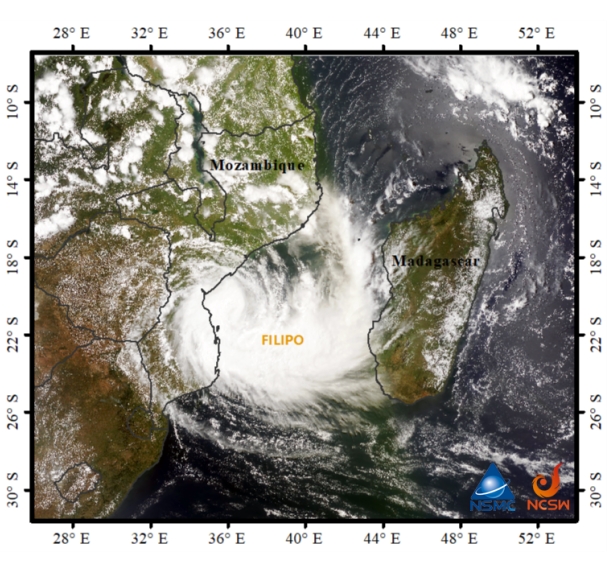China deepens meteorological collaboration with Africa via Fengyun Satellites

The FY-3D meteorological satellite true-color monitoring image shows that the main body of the severe tropical storm Filippo was located in the Mozambique Channel at 20:35 on March 11 (Beijing Time), and its peripheral cloud system has begun to affect the central and eastern areas of Mozambique. [Photo provided by China Meteorological Administration]
Chinese and African leaders are to meet in Beijing from September 4 to 6 for the Forum on China-Africa Cooperation (FOCAC) focusing on friendship, cooperation, and future prospects.
Meteorological cooperation is an indispensable part of China-Africa cooperation over the years. China has significantly expanded its Fengyun satellite services across Africa, providing essential meteorological data to 30 African countries and playing a vital role in disaster management on the continent. This initiative, led by the China Meteorological Administration (CMA), marks a key step in enhancing Africa's ability to respond to natural disasters and improve weather forecasting capabilities.
Expanding Satellite Data Access
Since 2018, CMA has opened Fengyun satellite data access to a wide range of African organizations and institutions across countries such as Egypt, South Africa, Nigeria, and Ethiopia. Mozambique now hosts a dedicated FY-2H satellite direct receiving station, which has bolstered the country’s meteorological monitoring capabilities.
To date, 36 African users have placed 416 orders through the Fengyun data website, resulting in the delivery of 687.8 GB of satellite data, mainly from Fengyun-2, Fengyun-3, and Fengyun-4 satellite series. CMA has also promoted the use of software platforms like the international version of Fengyun Earth and the Satellite Weather Application Platform (SWAP) to improve the utilization of these data. So far 24 African countries, including Morocco, Tanzania, and Nigeria, have accessed the SWAP platform, while six countries, such as Ghana and Algeria, have used the Fengyun Earth platform.
Strengthening Emergency Response
CMA has been working since 2018 to bolster the application of its meteorological satellites in Africa. The agency has implemented the "Emergency Support Mechanism for International Users of Fengyun Meteorological Satellites in Disaster Prevention and Mitigation," which now includes 12 African countries, among them Algeria, Nigeria, and Mauritius.
This mechanism has been activated 11 times, providing critical data and monitoring reports during disasters like typhoons, floods, fires, and heavy rainfall. Since 2018, CMA has delivered 5.1 TB of Fengyun satellite data to 24 African countries through the International Charter on Space and Major Disasters, assisting in emergency responses to major natural disasters.
Enhancing International Collaboration
In addition to data and emergency support, CMA is fostering closer ties with African nations through educational exchanges. Under the "Belt and Road" Meteorological Visiting Scholar Program, launched in collaboration with China’s Ministry of Education, five experts from Ethiopia, Tanzania, and Seychelles began a year-long academic exchange in China in March 2024.
Furthermore, African scholars from countries such as Seychelles, Namibia, and Ghana have actively participated in the Fengyun Satellite International User Conference, reflecting the deepening cooperation between China and Africa in meteorological science.
CMA’s ongoing efforts to provide satellite data, enhance disaster response, and promote scientific collaboration underscore China's commitment to supporting Africa's meteorological development and strengthening global disaster resilience.
